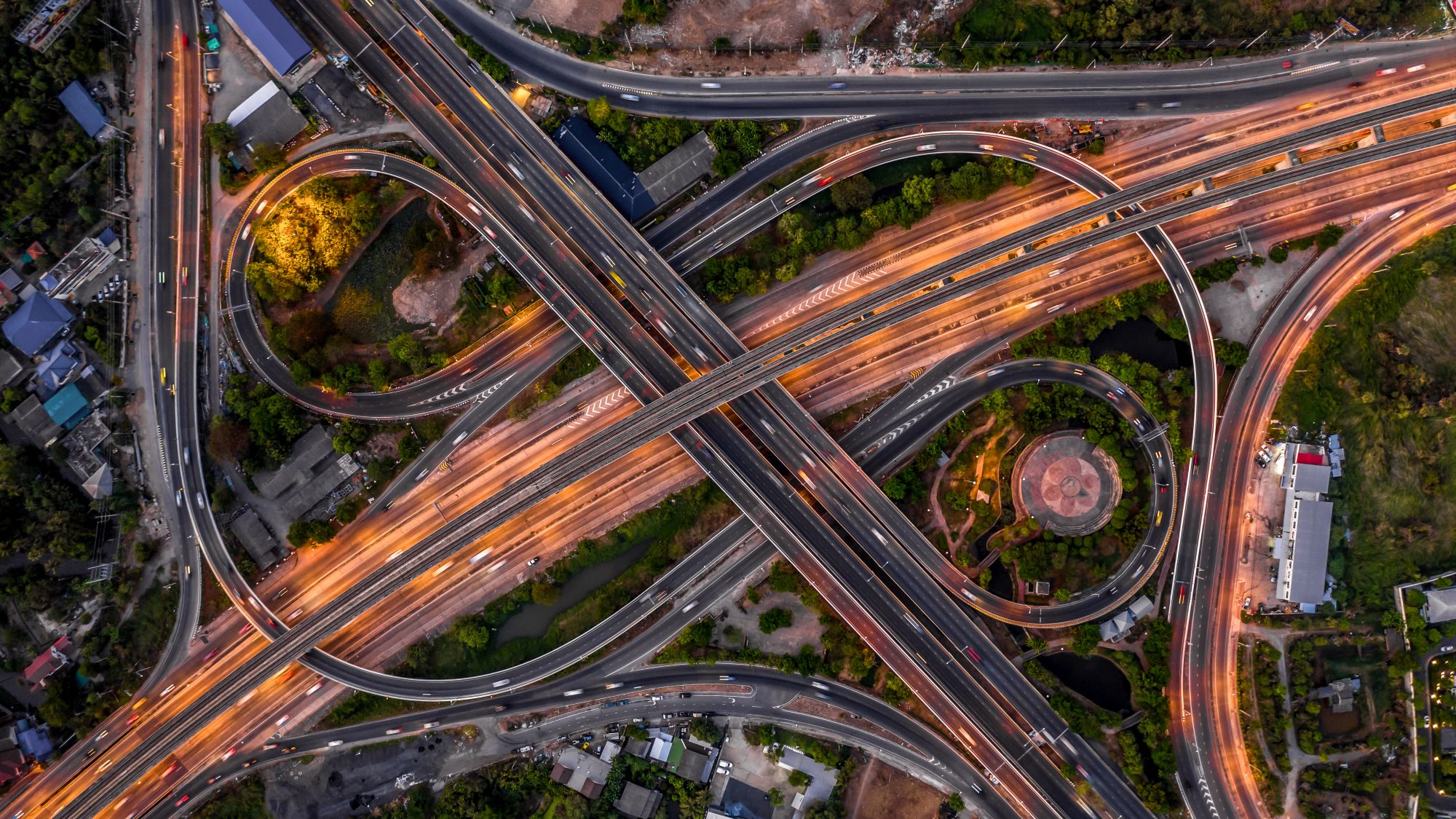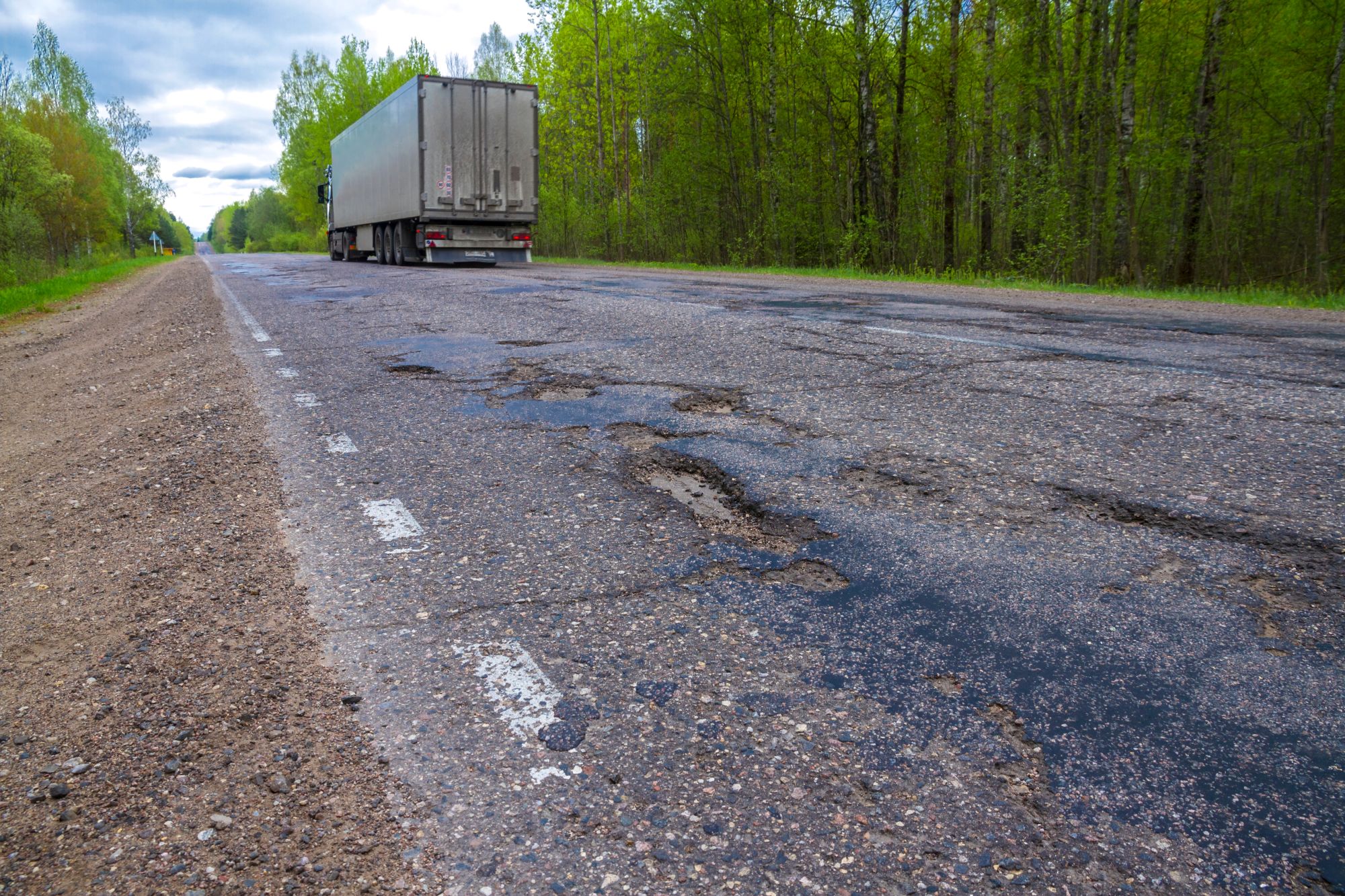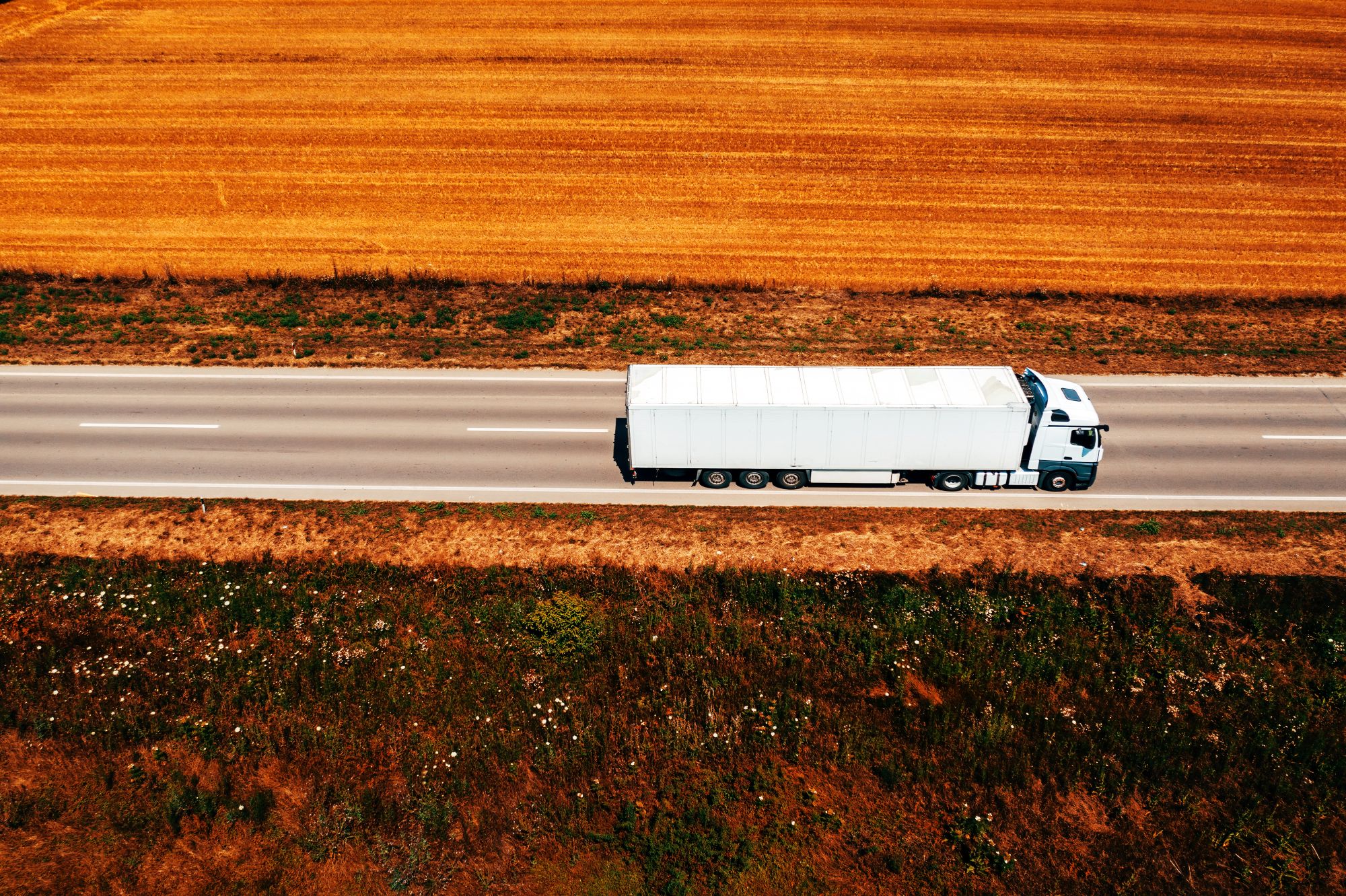
Guest
Cum ar putea afecta finanțarea infrastructurii din Regatul Unit industria mobilității
Creat: 02.07.2025
•
Actualizat: 03.07.2025
După ani de investiții neuniforme și aglomerație crescândă, guvernul britanic s-a angajat să cheltuiască peste 700 de miliarde de lire sterline pentru infrastructură în următorul deceniu - mare parte din această sumă fiind destinată drumurilor naționale. De la noi coridoare de transport de marfă la sisteme digitale de trafic de ultimă generație, impactul strategiei pe 10 ani privind infrastructura asupra șoferilor profesioniști și asupra industriei mobilității în general ar putea fi transformator.
Drumurile ating punctul de rupere
Drumurile sunt doar o parte a mixului de transporturi din Regatul Unit - dar ele transportă majoritatea covârșitoare a mărfurilor. [Conform datelor guvernamentale] (https://assets.publishing.service.gov.uk/media/67dd4f03c6194abe97358bf6/dft-investment-management-srn-25-26.pdf#:~:text=create%20jobs%20and%20housing%20and,at%20the%20end%20of%20March), 81% din transportul intern de marfă și 75% din importuri și exporturi se deplasează pe șosea, aceasta fiind coloana vertebrală a logisticii și economiei Regatului Unit.
Și, în ciuda faptului că reprezintă doar puțin peste două procente din lungimea rețelei rutiere a Regatului Unit, [Rețeaua rutieră strategică (SRN)] (https://https://nationalhighways.co.uk/media/u4apnjvk/nh-srn-simplified-map-2023.pdf) transportă 34% din toate călătoriile rutiere - inclusiv multe dintre cele mai sensibile la timp, rute de transport de marfă cu volum mare. Pentru șoferii care le utilizează, starea și capacitatea acestora au un impact direct asupra siguranței, eficienței și performanței livrărilor.
Cu toate acestea, datele Road Condition Index (RCI) arată că aproximativ 24.500 de mile - mai mult de una din 10 mile - din rețeaua din Anglia și Țara Galilor este probabil să necesite întreținere în următoarele 12 luni.
O serie de închideri de urgență recente ale podurilor au scos în evidență și mai mult cât de vulnerabilă a devenit rețeaua. În unele zone, structurile de susținere fisurate și betonul vechi de zeci de ani au creat condiții periculoase pentru toți utilizatorii drumurilor - în special pentru vehiculele grele de marfă, care sunt adesea primele care se confruntă cu restricții de greutate sau cu redirecționări forțate.
Guvernul a reacționat cu un nou fond de 1 miliard de lire sterline pentru repararea și reconstrucția podurilor, pasajelor și pasajelor supraterane deteriorate, ca parte a strategiei sale privind infrastructura. Este un pas binevenit - și unul care reflectă presiunea tot mai mare din partea industriei. Pentru șoferii profesioniști, aceasta ar putea însemna mai puține ocoluri, mai puține restricții bruște și mai puțin timp pierdut din cauza infrastructurii care nu este adecvată pentru logistica modernă.
Dar siguranța nu înseamnă doar evitarea defecțiunilor catastrofale. Este vorba, de asemenea, despre reziliența pe termen lung - asigurarea întreținerii corespunzătoare a drumurilor, podurilor și acostamentelor înainte ca acestea să devină pericole. Această atenție sporită acordată întreținerii semnalează că întreținerea drumurilor poate începe, în sfârșit, să se ridice la înălțimea, dimensiunea și viteza vehiculelor care depind de ele.

Problema gropilor
În timp ce anunțurile sunt dominate de proiecte de profil înalt, de multe ori starea zilnică a suprafeței drumurilor este cea care are cel mai mare impact asupra șoferilor. Pentru cei din domeniul transportului, gropile sunt mai mult decât o pacoste - reprezintă un pericol persistent pentru siguranță și o povară costisitoare.
Expunerea repetată la suprafețe denivelate crește uzura vehiculelor grele de transport, deteriorează anvelopele și suspensiile și contribuie la oboseala șoferilor. În unele cazuri, deteriorarea cauzată de gropi a forțat vehiculele să iasă de pe drum pentru reparații de urgență, perturbând livrările și afectând acordurile privind nivelul serviciilor.
Pentru șoferi, riscurile sunt personale. Încercarea de a evita gropile - în special pe drumurile înguste sau aglomerate - poate duce la manevre periculoase. Adăugați vreme nefavorabilă, iluminare limitată sau programe de livrare strânse și miza crește.
Ca parte a inițiativei sale mai ample privind infrastructura, guvernul a alocat [1,6 miliarde de lire sterline] (https://www.gov.uk/government/news/pm-tells-councils-to-prove-action-on-pothole-plague-to-unlock-extra-cash-and-reveals-48bn-for-major-roads) ca parte a Planului pentru schimbare pentru modernizarea infrastructurii locale, inclusiv a gropilor, a suprafețelor crăpate și a căilor de rulare uzate. Scopul este de a aduce drumurile la un standard mai sigur și mai fiabil - în special pe rutele cu trafic intens de marfă.
Aceasta nu va rezolva problema peste noapte, dar marchează o schimbare a priorităților - recunoașterea faptului că bunăstarea șoferilor începe cu elementele de bază și că o călătorie sigură și confortabilă depinde de drumuri bine întreținute.
Pentru flote, beneficiile în lanț includ mai puține reparații neplanificate, cereri de despăgubire mai mici și mai puține perioade de inactivitate pentru șoferi. Pentru șoferi, înseamnă mai puține zdruncinături, mai puțin stres și un lucru mai puțin de care să se îngrijoreze într-o tură lungă.
O rețea fiabilă
Bunăstarea șoferilor se află în centrul discuțiilor moderne privind transportul. Orele lungi de lucru, programele întârziate și facilitățile inadecvate și-au pus amprenta asupra lor. Dar cele mai recente planuri ale guvernului oferă speranțe pentru o rețea mai sigură și mai bine conectată.
Peste tot în Marea Britanie, facilitățile pentru șoferi s-au străduit să țină pasul cu cererea. Parcarea este adesea limitată, serviciile sunt întinse și multe zone de odihnă nu oferă confort și securitate - în special pentru operațiunile pe distanțe lungi. Acesta este motivul pentru care guvernul [îmbunătățește, de asemenea, mediul de conducere] (https://www.gov.uk/government/news/more-than-14-million-in-joint-government-and-industry-funding-to-boost-innovation-and-working-conditions-in-freight): parcări mai sigure, facilități de bunăstare mai bune și reforme de planificare pentru a accelera dezvoltarea de noi locații.
În același timp, se accelerează investițiile în centre de încărcare și realimentare pentru camioanele electrice și cu hidrogen. Moto, de exemplu, s-a angajat să instaleze peste 300 de încărcătoare electrice pentru camioane grele pe 23 de autostrăzi, în timp ce Ashford Truckstop este transformat într-un important centru de încărcare pentru transportul de marfă de peste Canalul Mânecii. Aceste instalații nu au doar rolul de a menține vehiculele în mișcare, ci și de a oferi șoferilor locuri sigure și bine echipate pentru a se odihni și a se reîncărca.
Dacă șoferii dvs. caută un loc sigur pentru a opri, aplicația noastră intruck le permite să identifice și să rezerve locuri de odihnă în Marea Britanie și Europa. [Aflați mai multe și descărcați-o aici] (https://intruckapp.com/)

Costul aglomerației
Blocajele de trafic, rutele imprevizibile și presiunea de a respecta termenele de livrare contribuie la stresul și oboseala șoferilor - și fac din drum un loc mai periculos.
Îmbunătățirile majore ale infrastructurii, cum ar fi Lower Thames Crossing, dublarea A66 și îmbunătățirea M60 Simister Island, sunt concepute pentru a reduce congestionarea și riscurile de accidente la unele dintre cele mai cunoscute puncte de blocaj din Regatul Unit.
În plus, există în continuare un impuls pentru introducerea instrumentelor digitale care sprijină călătorii mai sigure și mai ușoare. Alertele de trafic în timp real, sistemele inteligente de detectare și o mai bună gestionare a traficului îi vor ajuta pe managerii de flote și pe șoferi să reacționeze rapid la perturbări și să schimbe traseul acolo unde este necesar.
[Programul Drumuri digitale al autostrăzilor naționale] (https://nationalhighways.co.uk/our-work/digital-data-and-technology/digital-roads/) pregătește deja terenul, cu infrastructură inteligentă care poate detecta pericolele mai devreme, poate gestiona fluxurile de trafic mai inteligent și poate comunica actualizări mai clare, în timp real.
Ce înseamnă acest lucru pentru mobilitate?
Un pas înainte pentru mobilitate și bunăstarea conducătorilor auto. Efort național coordonat pentru a soluționa problema lipsei de infrastructură din Regatul Unit și pentru a moderniza drumurile într-un mod care să aducă beneficii șoferilor care se bazează cel mai mult pe ele.
Adevăratul test va fi punerea în aplicare. Transformarea finanțării în îmbunătățiri tangibile va necesita ascultarea conducătorilor auto, învățarea din experiența de primă linie și măsurarea succesului prin modul în care se simt drumurile - nu doar prin costul lor.
"Acest nou val de investiții nu se referă doar la reducerea timpilor de călătorie", spune Stuart Willetts, manager pentru dezvoltarea afacerilor în Regatul Unit, la SNAP. "Este vorba despre construirea unei rețele de transport care să sprijine bunăstarea șoferilor și eficiența operațională, precum și tranziția către o mobilitate curată. Suntem nerăbdători să vedem rezultatele."
Doriți să vedeți cum evoluează mobilitatea acolo unde vă aflați?
Utilizați Harta SNAP pentru a găsi servicii și soluții în apropierea dumneavoastră - indiferent de drumul pe care vă aflați.



